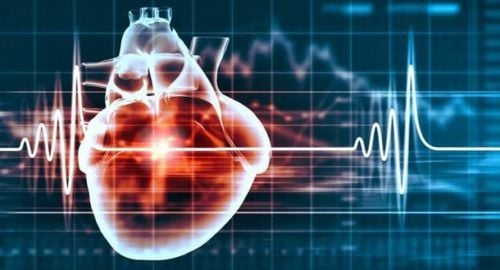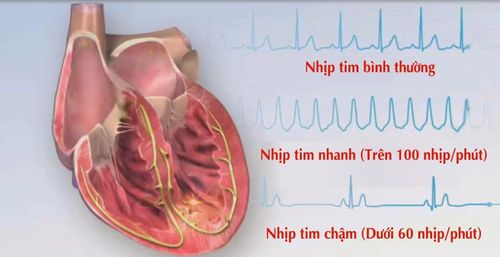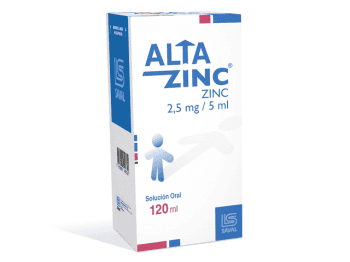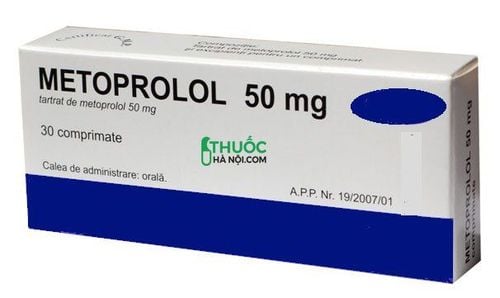This is an automatically translated article.
The article is professionally consulted by Master, Doctor Nguyen Tung Hoanh - Interventional Cardiologist - Department of Resuscitation - Emergency - Vinmec Nha Trang International General Hospital. The doctor has a lot of experience and strength in Resuscitation - Cardiac Emergency. circuit.Over the last two decades, the implantation of permanent pacemakers has been growing. Advances in the treatment of heart disease have improved the quality of life of patients with severe heart failure, and reduced mortality and heart failure events. Pacemaker placement is one of the most successful and earliest non-pharmacological therapies in the management of bradyarrhythmias.
1. What is bradycardia?
We all know, the heart is likened to the biological pump of the body, the heart must contract to supply blood to the organs and maintain life. In order for the heart to contract, it must have a pacemaker called the sinus node, which emits impulses to stimulate the heart to contract.In a normal person, the sinus node generates a rhythm of 60-80 times/minute, but during exertion (exercise, exercise, etc.), the sinus node will respond to a faster rhythm, depending on the body's needs. When the patient has bradycardia, the heart will beat slower than normal, for example, less than 50 times / minute, less than 40 times / minute, even less than 30 times / minute or sometimes prolonged cardiac arrest.
Depending on the degree of bradycardia, the patient may have different manifestations, in mild cases, fatigue, inability to exercise, dizziness..., in severe cases, fainting due to cerebral ischemia. cardiac arrest causes sudden death.
2. Why should a pacemaker be placed in patients with arrhythmias?
Arrhythmia is generally a condition in which the heart beats irregularly, too slowly or too fast; The cause can be congenital, due to age, due to heart damage after myocardial infarction, neuromuscular disorders, complications of open heart surgery, treatment of heart valve disease, congenital heart disease ... Among these In severe cases, the heart often does not work efficiently, cannot supply enough blood to the body, leading to signs and symptoms such as fatigue, fainting, shortness of breath, confusion....That's why In case of need, the doctor needs to place a pacemaker in the heart, most commonly bradycardia and conduction block (a condition in which electrical impulses travel through the heart slower than normal or blocked).

Rối loạn nhịp tim nói chung là tình trạng tim đập không đều, quá chậm hoặc quá nhanh
3. How the pacemaker works
The pacemaker is composed of two components: the control unit and the electrode wire. One end of the electrode wire is attached to the control unit, the other end is attached to the heart. The controller is a small, lightweight metal box containing a battery and an electrical circuit that regulates the frequency of electrical impulses, sending low-energy electrical impulses to the heart via electrodes attached to the heart. This electrical pulse causes the patient's heart to contract at the set frequency.Pacemaker can increase heart rate in cases of bradycardia, help control heart rate, synchronize electrical activity between atria and ventricles (in case of dual chamber pacemakers), help chambers effective ventricular contraction in cases of atrial arrhythmias such as atrial fibrillation, preventing dangerous arrhythmias....
4. How to put the pacemaker?
Pacemakers can be placed temporarily or permanently. Place a temporary pacemaker to correct heart rhythm problems such as: bradycardia after a heart attack, after heart surgery, or after a drug overdose.... Temporary pacemakers are often used in emergency and be used until the rhythm disturbances have recovered or are stabilized.Cases of permanent pacemakers in the treatment of persistent or irreversible heart rhythm problems. There are two methods of pacemaker placement: subendocardial and pericardial placement. The controller is attached under the skin, at the chest or abdomen through a small surgery.
Subendothelial method : The electrode wire will be threaded through the catheter in the vein into the heart chamber and in contact with the inner wall of the heart; Pericardial method (usually used in children): Electrodes are attached directly to the surface of the heart through minor thoracotomy, the risk of pacemaker surgery is only about 1% and rarely there are deaths.
5. Notes for patients using a pacemaker

Máy tạo nhịp tim cần được kiểm tra định kỳ để đảm bảo hoạt động tốt
Pacemaker wearers can use common household appliances (cell phones, mp3 players, iPads, microwave ovens, remote controls, televisions, radios, hair dryers... ). Excessive close contact or prolonged use of these devices should be avoided as they may interfere with pacemaker operation.
Pacemakers need to be checked periodically to make sure they are working properly, check in time when the electrodes are loose or broken, the battery is low or damaged, heart disease gets worse... The pacemaker's battery can Use 5 - 15 years depending on the operation of the machine, so when the battery is almost empty, the controller will have to be replaced with the battery. Therefore, patients need to be re-examined regularly according to the doctor's appointment (usually 3 - 6 months) to be examined, evaluated and handled promptly.
Always carry a discharge certificate or pacemaker certificate and present it when necessary, especially when checked at the airport. Devices such as store anti-theft systems, airport screening devices, and metal detectors can interfere with machine operation.
When going to the doctor, it is necessary to inform the medical staff that you have a pacemaker because some medical devices can affect the pacemaker such as: magnetic resonance imaging (MRI), lithotripsy, ablation machine electricity in surgery....
6. Where is the pacemaker implanted?
Bradycardia can be treated with medication. But if medication doesn't work, your doctor will use a small device called a pacemaker, implanted under the chest muscle. The machine will support the generation of electrical impulses, support stimulation and restore the necessary heart rate, avoiding sudden death. Vinmec International General Hospital has routinely implemented a very effective pacemaker implantation technique.Vinmec is equipped with Hybrid operating room system, advanced equipment such as DSA angiography machine, anesthesia machine with the most closely integrated patient hemodynamic monitoring software (PiCCO system, entropy ...) . Therefore, the Hybrid operating room can meet the requirements of surgery and intervention for pacemaker implantation, dilation, coronary stenting, aortic stent graft, open heart surgery, heart valve replacement for congenital heart diseases, with Modern techniques are minimally invasive, safe, and help patients recover quickly.
Cardiovascular Center - Vinmec International General Hospital owns a team of experts including professors, doctors, specialists 2, and masters with experience and great reputation in the field of medical treatment. , surgery, interventional cardiac catheterization and application of advanced techniques in the diagnosis and treatment of cardiovascular diseases. In particular, the Center has modern equipment, on par with the most prestigious hospitals in the world. In addition, Vinmec also has a comprehensive cooperation with Cardiology Institute - Bach Mai Hospital, Cardiology Department of Hanoi Medical University, Paris Decartes University - Georges Pompidou Hospital (France), University of Pennsylvania (USA)...
In April & May 2021, when there is a need for medical examination and treatment at Vinmec Times City International General Hospital, customers will enjoy dual incentives:
- Free specialist examination and discount 50% of many cardiovascular examination packages such as:
+ Basic Cardiovascular Screening Package
+ Hypertension Checkup Package
+ Heart Failure Checkup Package
+ Comprehensive Cardiovascular Examination Package
- 50% discount for customers There are indications for post-examination treatment. The program is limited to the corresponding technique of each hospital and to customers who perform this treatment technique for the first time at Vinmec.
Please dial HOTLINE for more information or register for an appointment HERE. Download MyVinmec app to make appointments faster and to manage your bookings easily.













